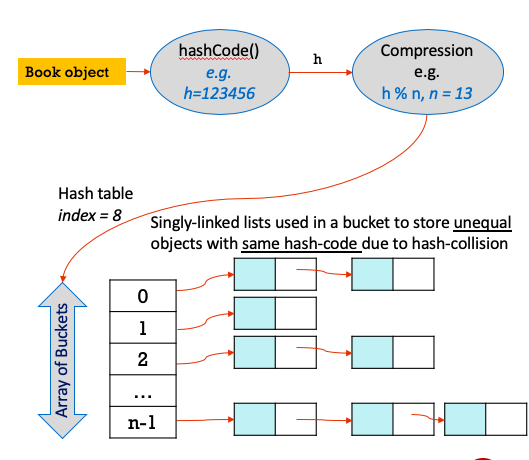【定义】
有index的集合
【hash的原理】
term for a situation when two different objects return the same hashcode: hash collision
就是无规律的一一对应排序,相同object对应的HASH应该相同,相同对应的HASH应该不同。具体实现:hashCode(It returns an int hash-code depending on the memory address of the object 根据obeject的位置来对应in the heap) equal() 都是自动继承的。
Use a function on hashcode, such as modulo, to calculate the index into the hashtable and then store the object at that index 根据hash的index来查找物体
【实现】
object有三种方法toString equal hashcode,通过传入memory address来计算值。同一obeject的不同state状态:要避免collision。
public int hashCode() { return Objects.hash(title, author, year); //hash on instance variable values }
//equals() implements equivalence relation - reflexive, symmetric, transitive, consistent – // on non-null object references @Override public boolean equals(Object o) { if (o == null) return false; // if o is null, then it can’t be equal to ‘this’ if (this == o) return true; // if both point to same object, then they are equal if (getClass() != o.getClass()) return false; //if not of same type, they can’t be equal Book b = (Book) o; //now that we know o is unique, non-null Book object, cast it to Book return title.equals(b.title) && author.equals(b.author) && (year == b.year); //compare values }
【步骤】
先用hashcode,再用equals。因为state不同要overload, 只overload一个会发生inconsistent。
